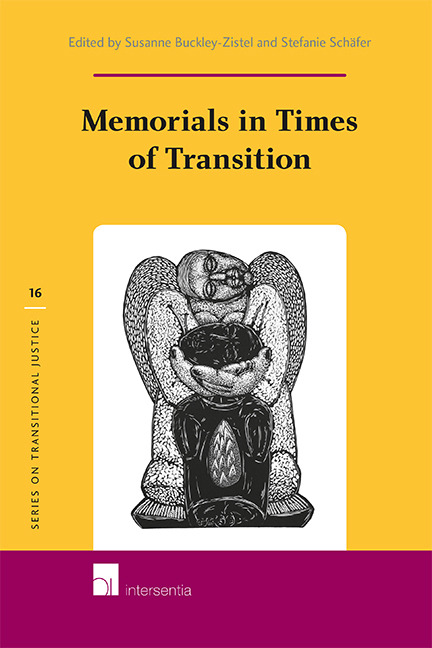Chapter 7 - The Srebrenica-Potočari Memorial: Promoting (In)Justice?
Published online by Cambridge University Press: 16 December 2020
Summary
The end of the war in Bosnia and Herzegovina marked the beginning of a transition from a society at war to a peaceful multi-ethnic society, a transition that is still on-going. One aspect of this transition is the question of dealing with the atrocities committed in the war of the early 1990s. How can a divided society address the massive human rights abuses in a manner that supports its transition to a future without violence?
In the context of an increased global emphasis on reckoning with past wrongs, post-war Bosnia and Herzegovina has witnessed the implementation of many transitional justice mechanisms, such as the International Criminal Tribunal for the former Yugoslavia (ICTY) in The Hague, international lustration measures or the vetting of state employees, just to name a few. Moreover, a number of memorials have been erected to commemorate the dead, which is in line with a tendency to include memorials in the toolkit of transitional justice, even though they are sometimes seen as instruments that promote narratives of enmity and revenge.
To understand the nexus between transitional justice in divided societies and memorials the town of Srebrenica serves as a good example, as it witnessed massive human rights violations during the war (1992–95) and today hosts the largest memorial in Bosnia and Herzegovina. The town's population consists of two dominant ethnic groups and former enemies, the Serbs and the Bosniaks which, today, live together without physical violence and at a first glance in harmony. However, if one stays in town longer, tensions between the groups become apparent, with the ethnic division rooted in the recent – and some will say the overall – history of Srebrenica. The war reached its climax in this little former tourist town when, in 1995, the Serb army of the so-called Republika Srpska committed genocide against the local Bosniaks and refugees who had sought refuge under the protection of the UN peacekeepers in a ‘safe area’. Approximately 40,000 Bosniaks were expelled and 8,500 killed. These incidents which happened in the context of the fall of the town in July 1995 made Srebrenica infamous throughout the world.
Today, only around 3,500 of previously 8,000 inhabitants remain in the town. As a consequence of the war the ethnic composition of the town has changed. Before, one third of the population was Serb and two-thirds Bosniak; during the war, while it was a Bosniak enclave, the number of inhabitants rose up to 70,000, due to a refugee influx from other parts of eastern Bosnia.
- Type
- Chapter
- Information
- Memorials in Times of Transition , pp. 173 - 198Publisher: IntersentiaPrint publication year: 2014
- 1
- Cited by

